Museu Nacional d'Art de Catalunya
- Tags:
 What to see Barcelona,
Barcelona,
Spain
What to see Barcelona,
Barcelona,
Spain
- Website: http://www.mnac.cat/
MNAC #1: Romanic treasures
Among the various museums located in the Montjuic district, this is the one you must not miss absolutely. Despite having being warned to visit the National Museum of Catalan Art with some free hours ahead, I had to speed up in the final part to avoid being still in the museum at closing time. Indeed, it took me almost three hours to go through the various sections of the museums with the due time.
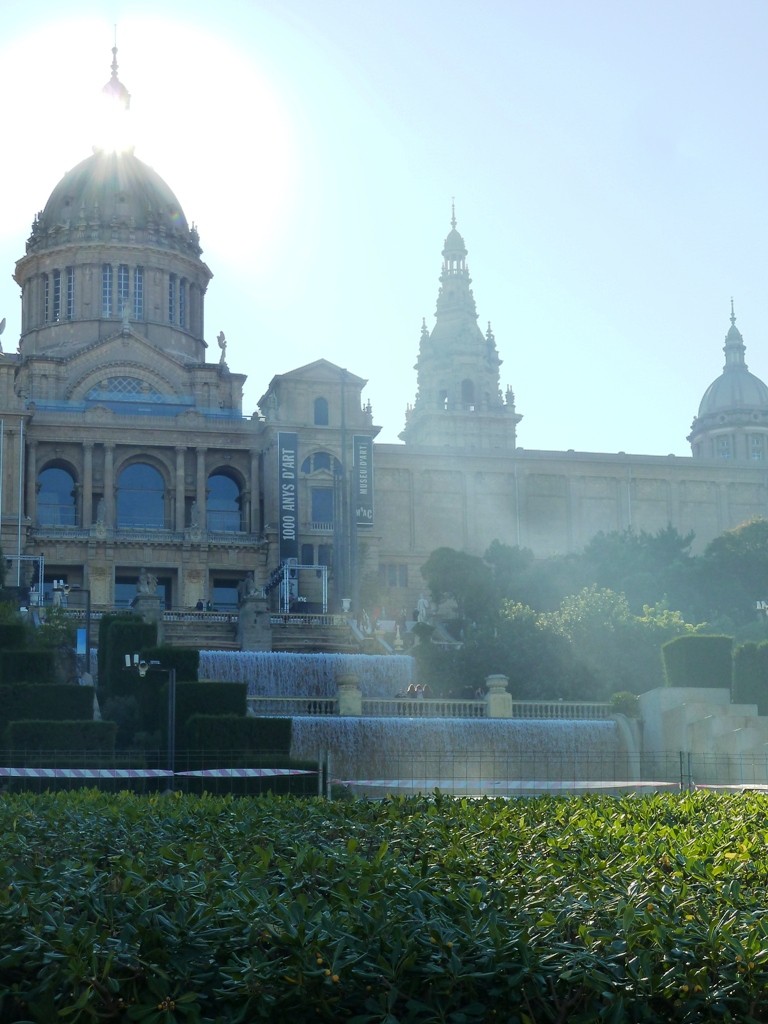
Located right at the top of the majestic staircase climbing from Plaza de España up to the Montjuic hill, the museum is housed in a Gothic-style 19th-century building, which is itself picturesque enough with its small waterfalls. The inside, though, is much more interesting, housing a large collection of art works ranging from the Romanic period to the contemporary years. The entrance fee is not exactly cheap (12 euro) but it is partly justified by the vastness of the collection. Anyway, as for many other museums in Barcelona, free entrance is offered on the first Sunday of every month (though on Sunday and high days the time for visitors is reduced to just four hours, from 10 to 14).
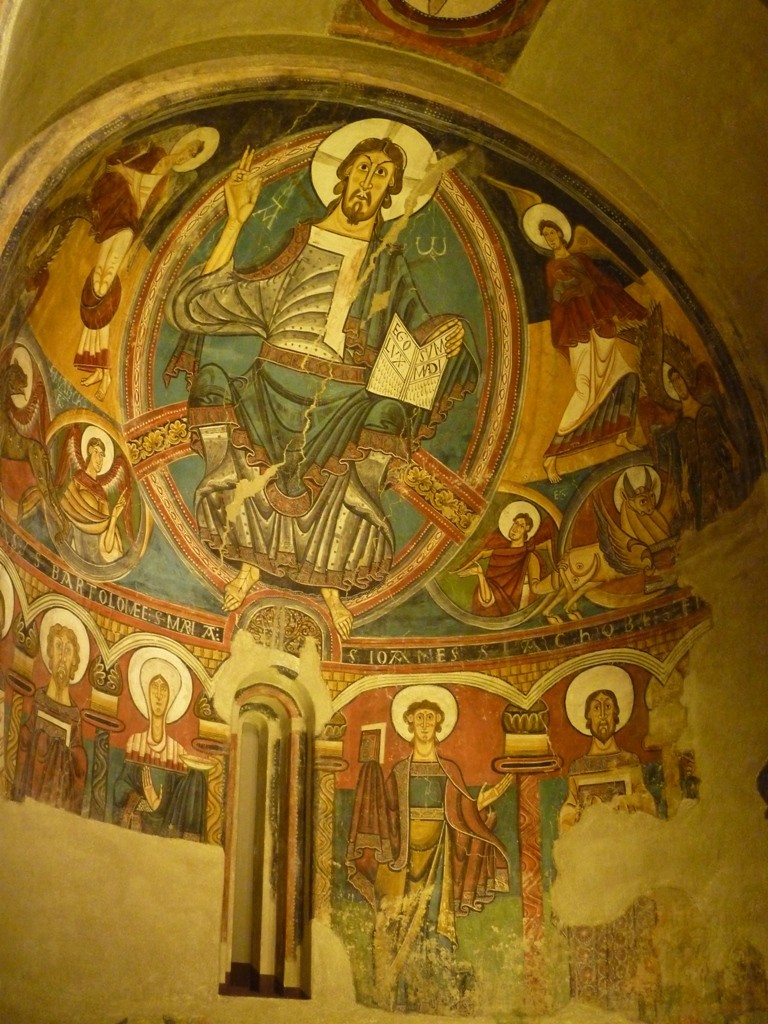
The most outstanding section of the museum is devoted to the frescoes dating back to the 11th or 12th century and originally found in some Romanic churches scattered in the most remote valleys of the Catalan Pyrenees. It is the case, for example, of the paintings from the churches of Sant Climent and Santa Maria in the village of Taull, which you can see in the pictures above. Though we may find the Romanic art too austere for our modern taste, it is essential to situate them in their original context: as the only form of explaining the mysteries of the Christian religion to the illiterate population of the Middle Ages, they had to be both impressive and emblematic at the same time.
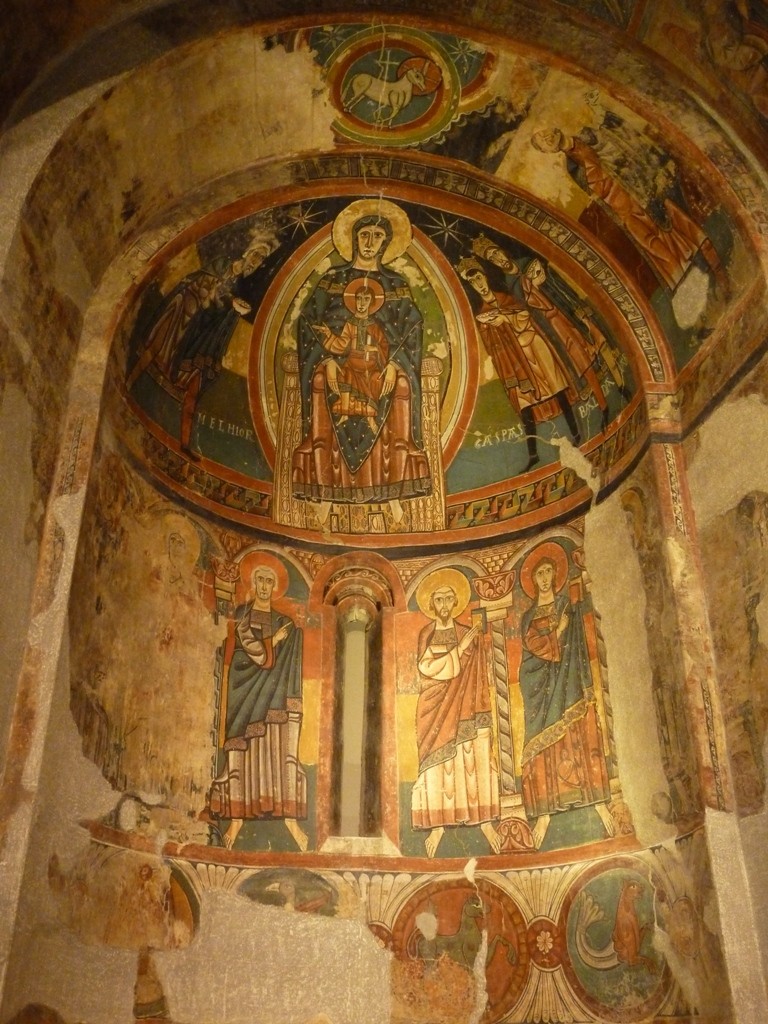
At any rate, it is impressive to notice how well this works have survived their almost millenarian history, and a transport that, despite sparking some complains at first, probably saved them from a worse fate. It was at the beginning of the 20th century, indeed, when most of them were bought by the Museum and brought to Barcelona to prevent them from being acquired by foreigners and brought abroad, as had already happened to a few of them. Instead, they were removed from their original location and transported to Barcelona with an Italian technique called strappo. The recreation of the original environment and the preservation of the frescoes have been so amazingly successful that one almost forget to be in a modern city museum, feeling rather like a lonely visitor in a dark isolated church in the heart of the Pyrenees.

Personally, I found this section amazing, a real gem, probably unique in the world in its genre. For this reason, I would advise you to take your time visiting it, in order to appreciate it completely (the collections includes not only frescoes, but also sculptures and paintings on wood).
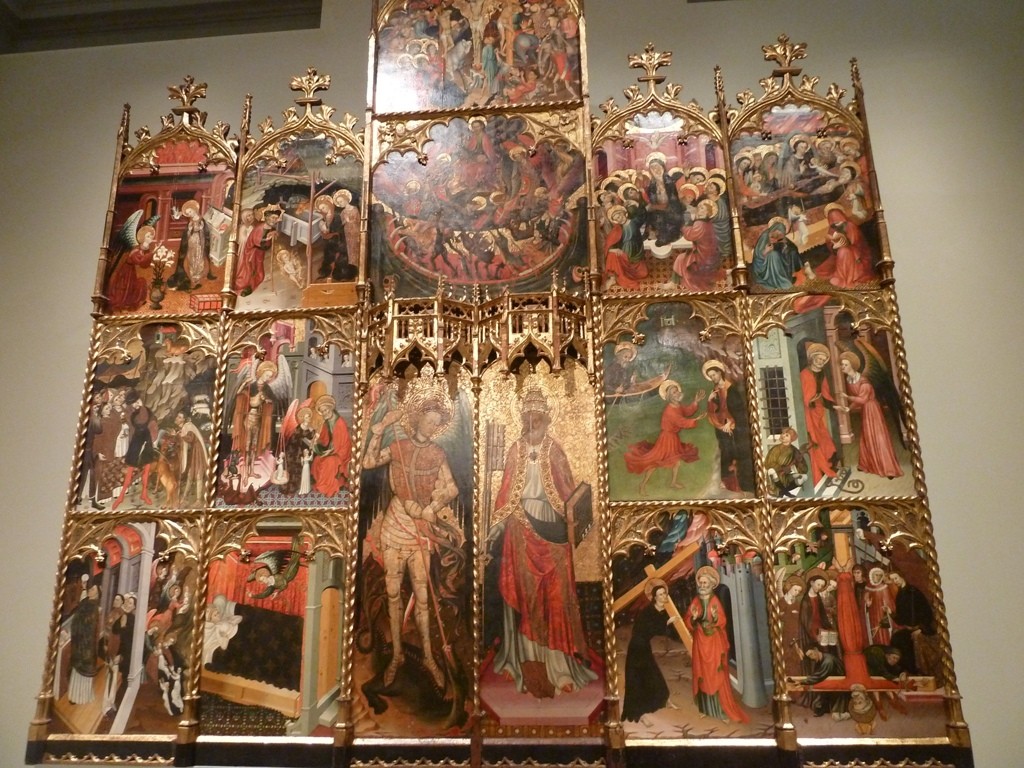
Opposite to the Romanic section you will find the Gothic one, the main part of which consists in fascinating altarpieces of growing size and accuracy. After admiring the wall paintings depicting the conquer of Mallorca, indeed, a spectacular series of wooden altarpieces starts. Most of them are centered on the figure of the Virgin Mary, but some locally worshipped saints (San Vicenç, Santa Eulalia, San Jeroni, Sant Antoni Abat) are also represented. You will not fail to notice how the pictorial style grows more vivid and realistic as the influence of the Flemish painters was gradually felt in Spain.
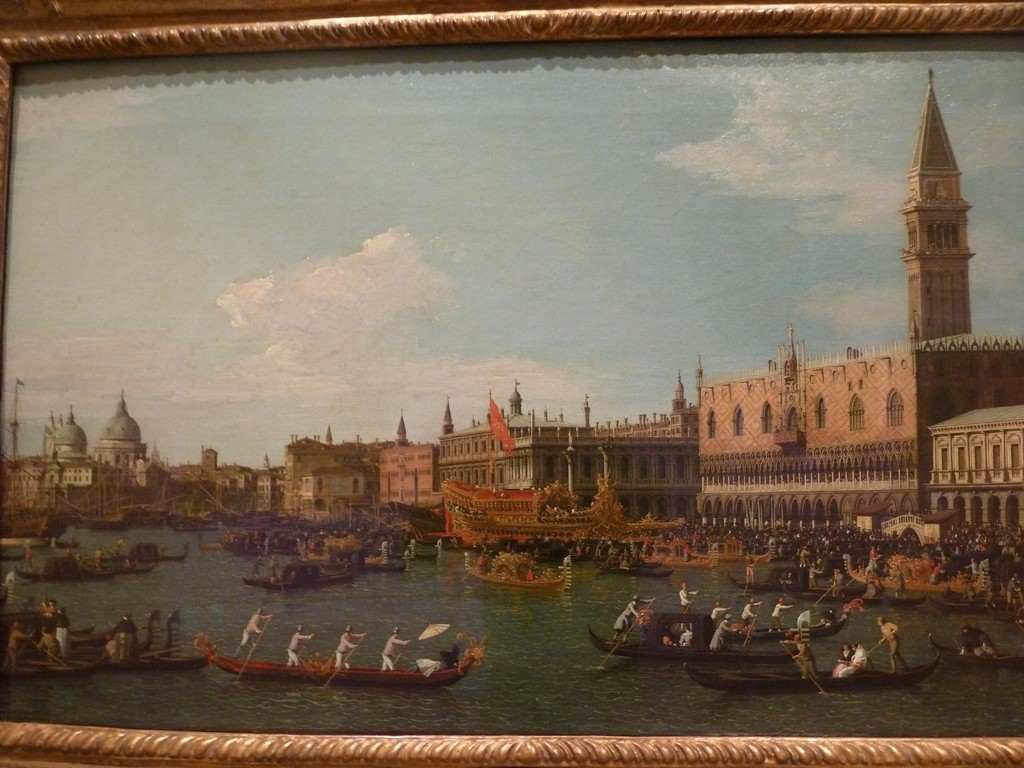
The Gothic finally gives way to the art of the Renaissance, which we can appreciate mostly thanks to the paintings of two private collections which have been donated to the museum (the Cambo bequest and the collection Thyssen-Bornemisza). It would be pointless to suggest focusing on some particular works, as a wide series of masterpieces by both Spanish (Velazquez, El Greco, Zurbaran) and foreign painters (Tiziano, Tintoretto, Canaletto, Rubens) is exhibited. Anyway, you will probably find some pictures by less known artists equally fascinating.

Up to the top floor is housed the section devoted to the Modern and Contemporary art. Unfortunately, I had to go through it quite hastily, but this fact did not prevent me from contemplating the several wonders on show. In the final part you will find some pictures by Dalí and Picasso, among the others, but several works by Catalan artists like Joaquim Mir, Santiago Rusiñol and Ramon Casas are also worth appreciating. One more piece of art deserves to be mentioned: The Battle of Tetuan by Mariano Fortuny, which due to the amazing size (300 x 972 cm) I could not give full evidence of in a single photograph.
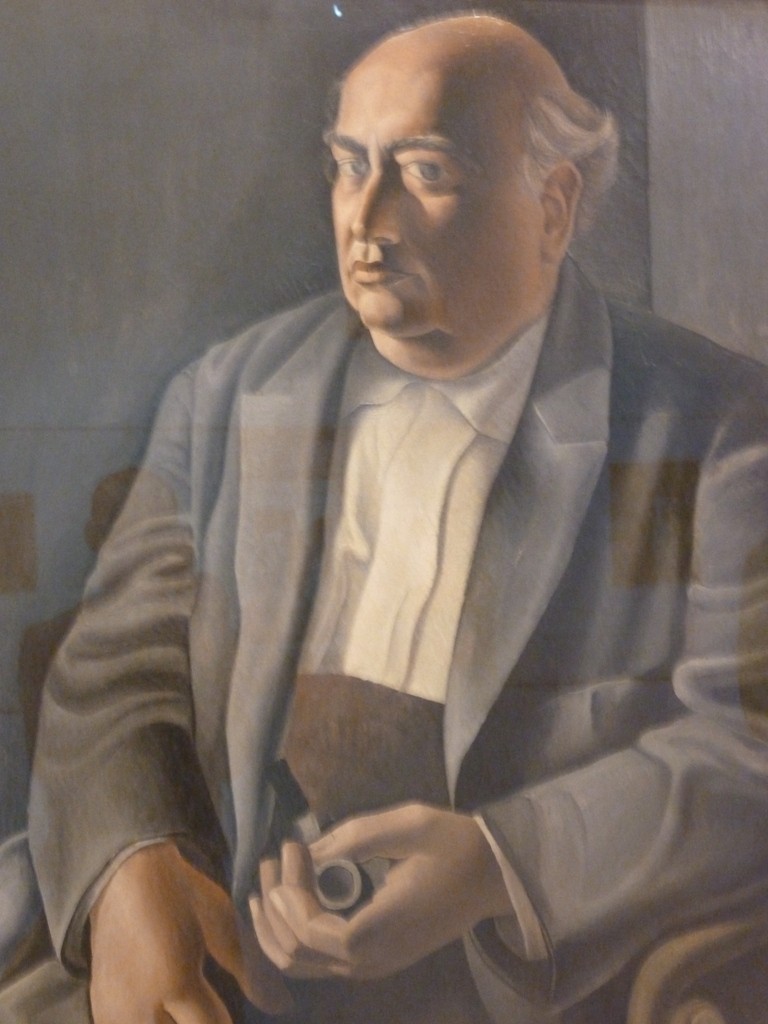
For those who might be interested in it, I have chosen my personal top 20 works, following the order in which they appear in the gallery below:
- Pintures de Sant Climent de Taull (1123)
- Pintures de Santa Maria de Taull (1123)
- Absis d'Estaon (segle XII)
- Pintures de Sant Esteve d'Andorra
- Baldaquì de Tost (1220)
- Absis d'Engolasters (1160)
- Mestre de la conquesta de Mallorca, Pintures murals de la conquesta de Mallorca (1285-90)
- Giovanni da Fiesole (Fra Angelico), Mare de Deu de la Humilitat, 1433-35
- Lluìs Dalmau, Mare de Deu dels Consellers (1443-45)
- Annibale Carracci, Francesco Albani, Apostols al voltant del sepulcre buit (1604-1605)
- Giovanni Antonio Canal (Canaletto), Retorn d'«ll Bucintoro» el dia de l'Ascensiò (1745-50)
- Joaquim Mir, La catedral dels pobres (1898)
- Bernat Despuig, Retable de sant Miquel i sant Pere (1432-33)
- Domenikos Theotokopoulos (El Greco), Crist amb la Creu (1590-95)
- Giandomenico Tiepolo, El xarlatà (1756)
- Mestre de la Seu d'Urgell, Teles de les portes de l'orgue (1495-98)
- Salvador Dalì, Retrat del meu pare (1925)
- Ramon Casas, Toros (Cavalls morts) (1886)
- Peter Paulus Rubens, Sant Roc com a patrò de la pesta (1623)
- Francisco de Zurbaràn, Immaculada Concepciò (1632)
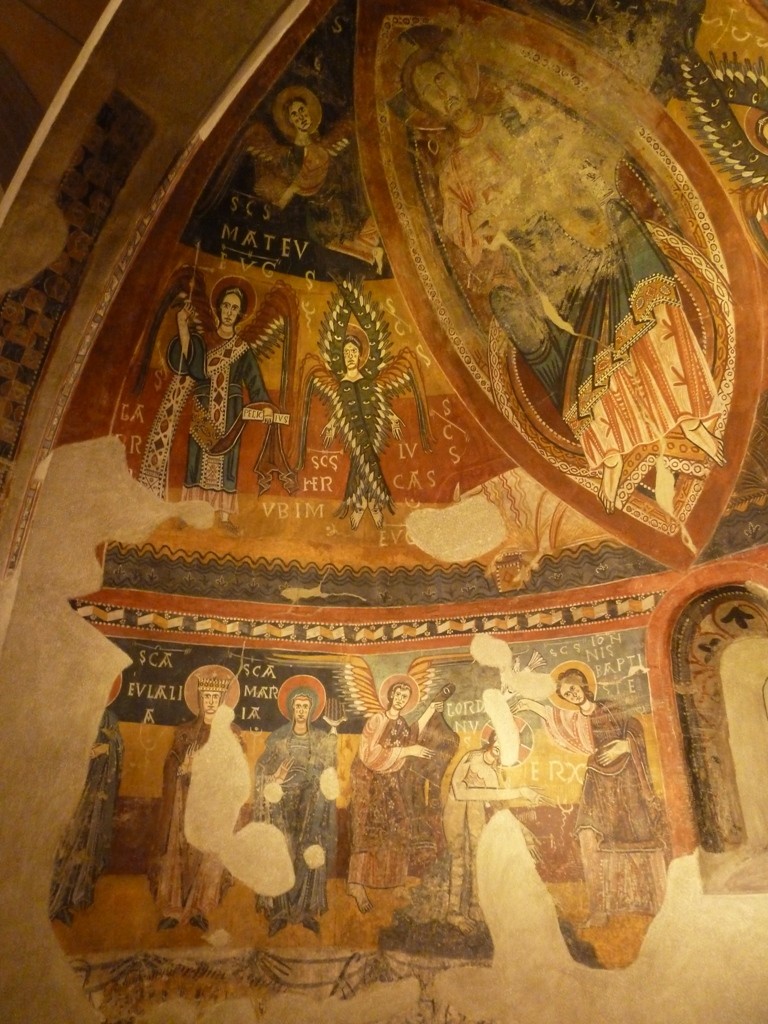

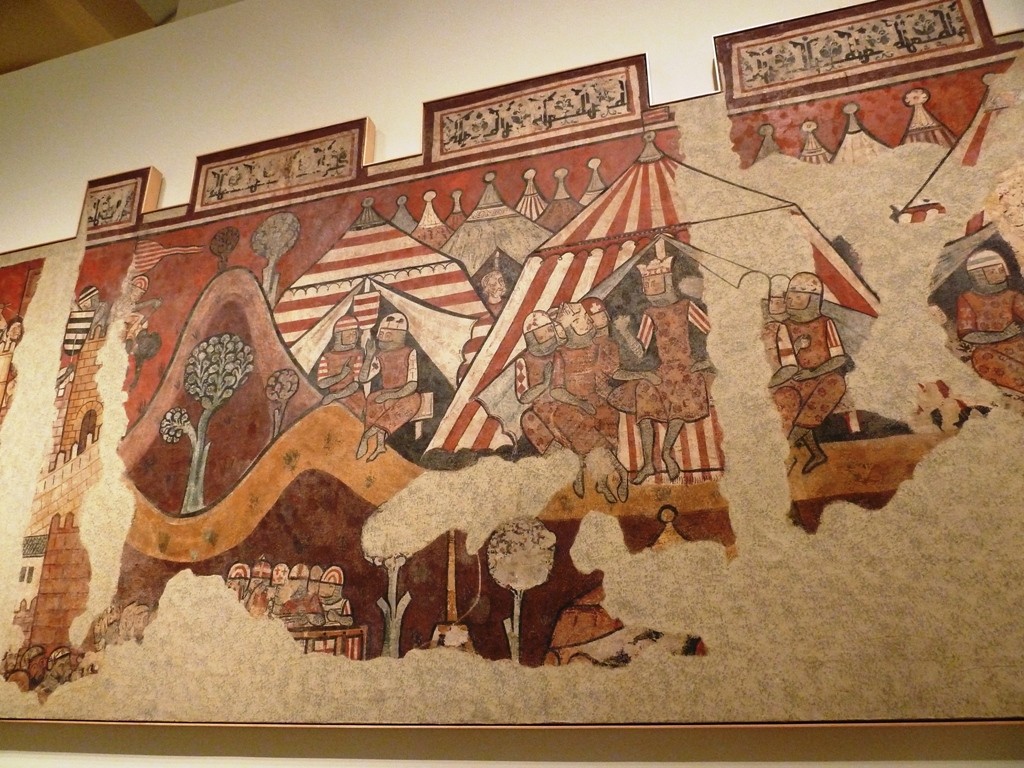
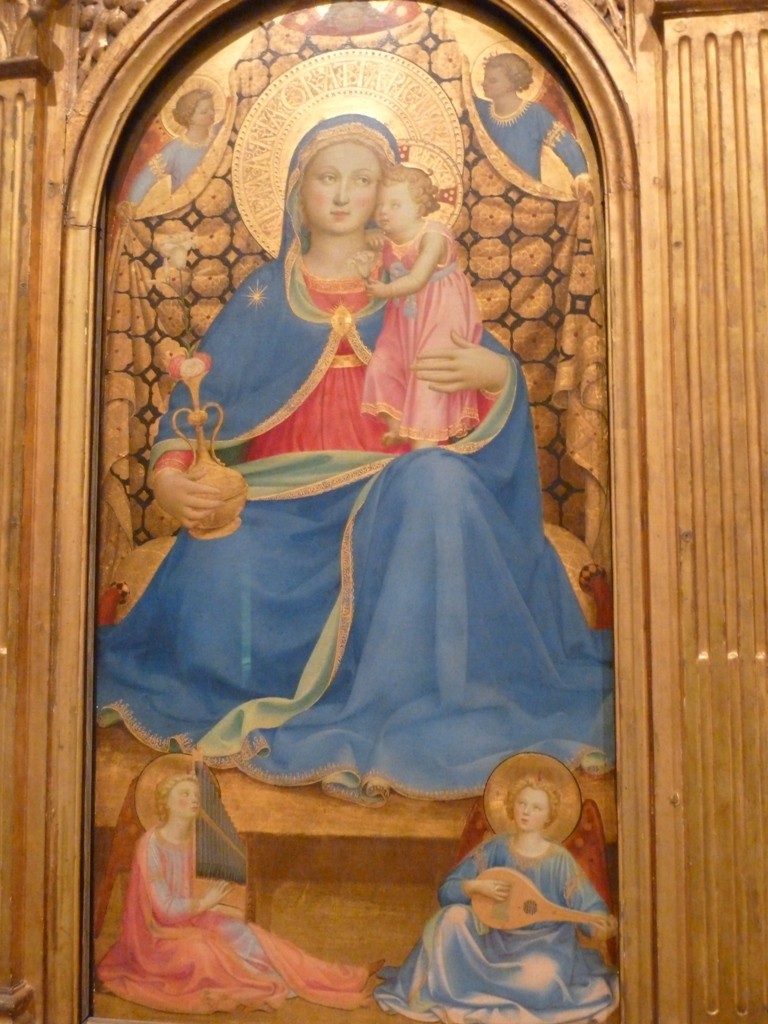
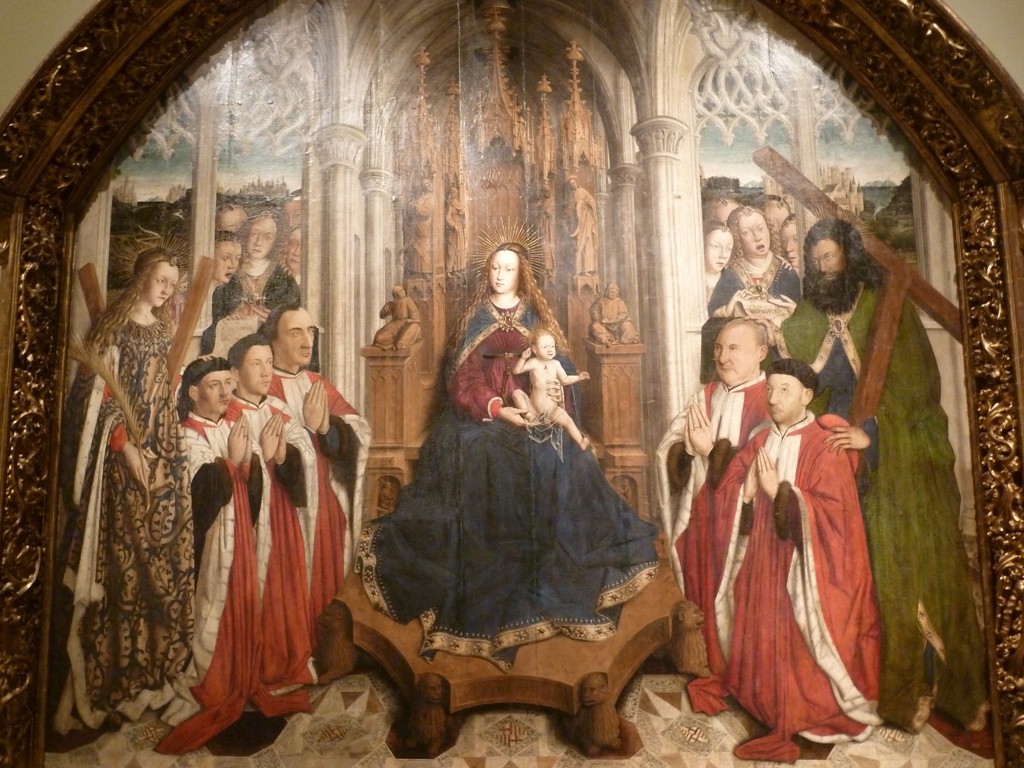
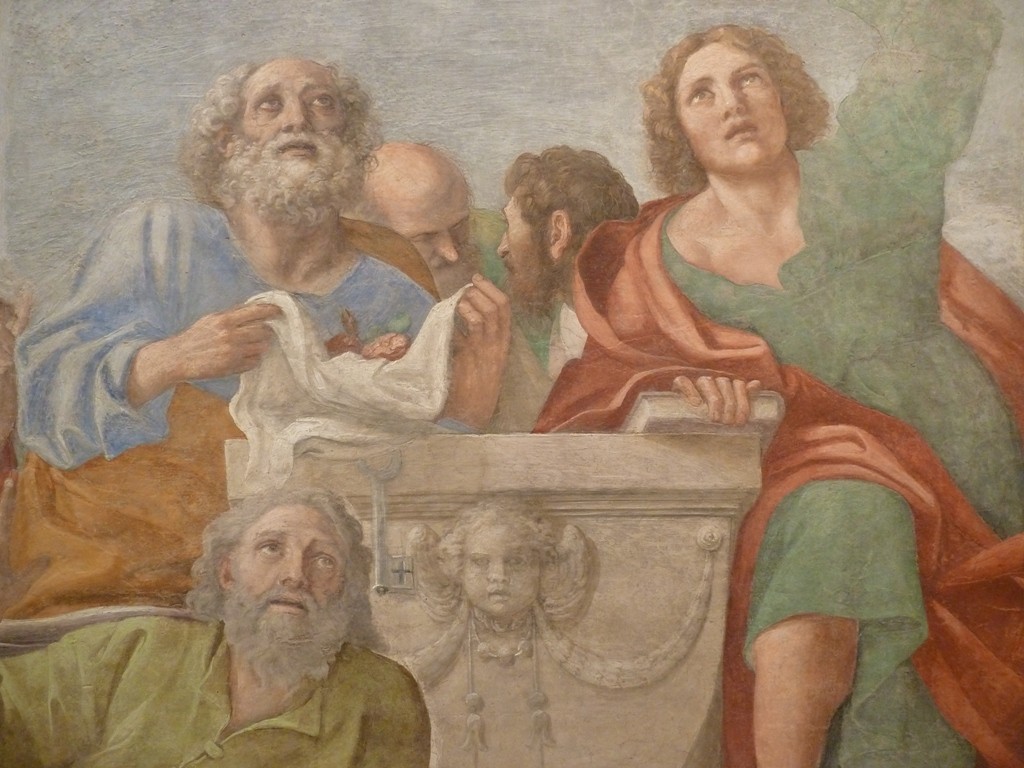
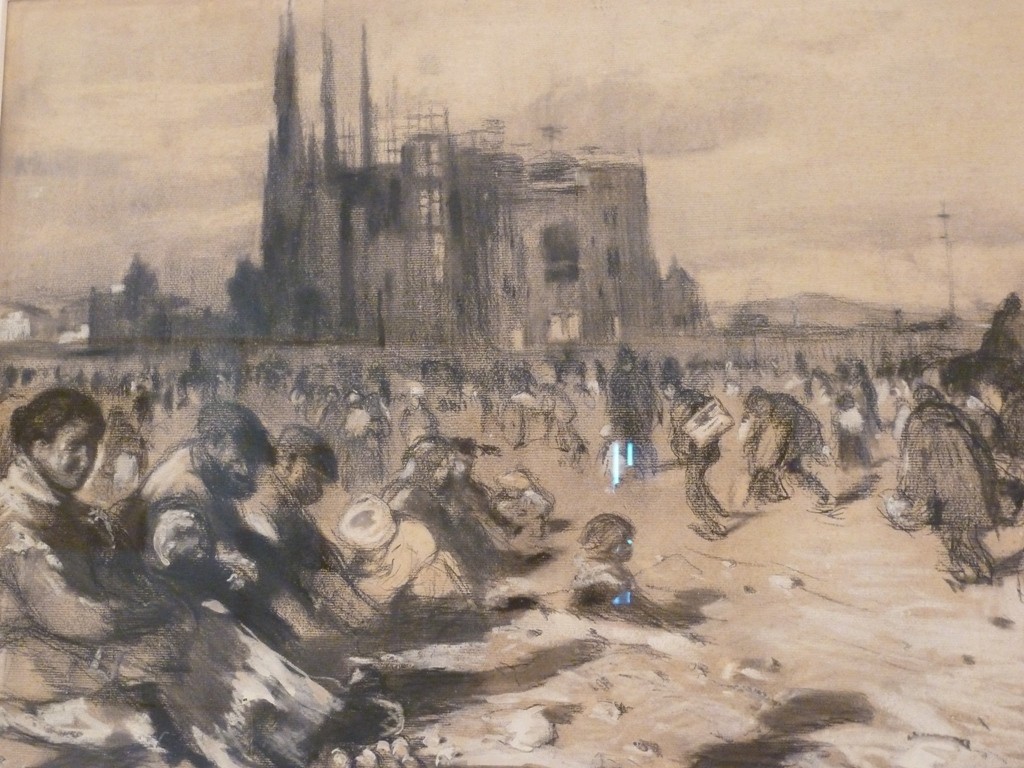
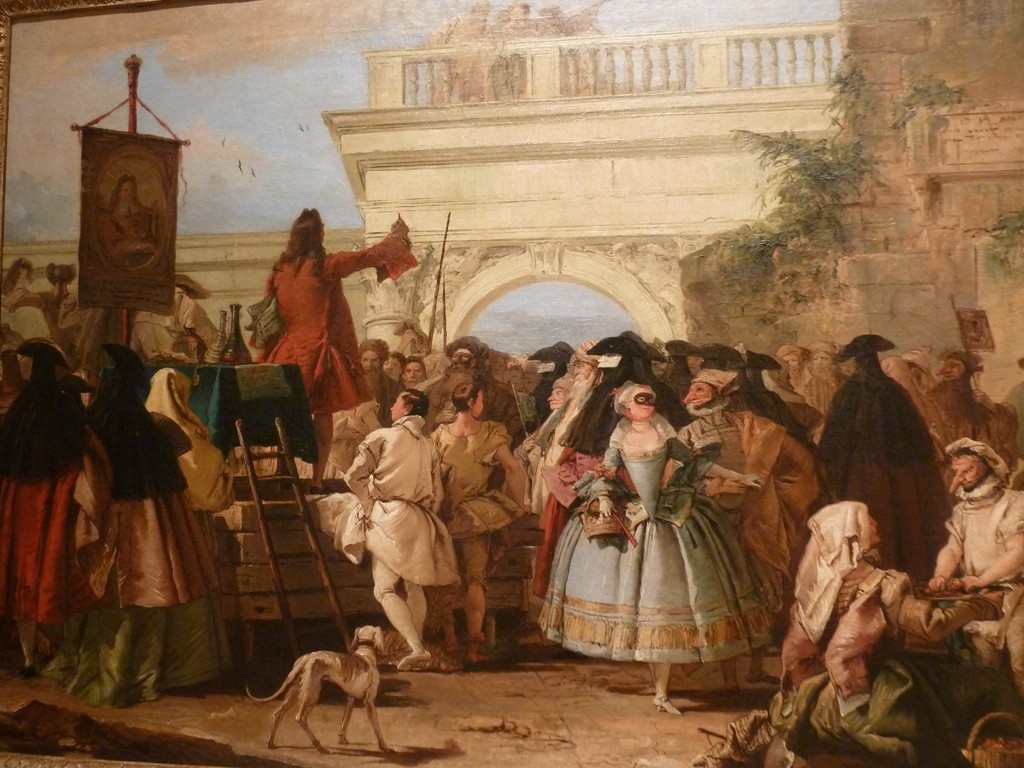
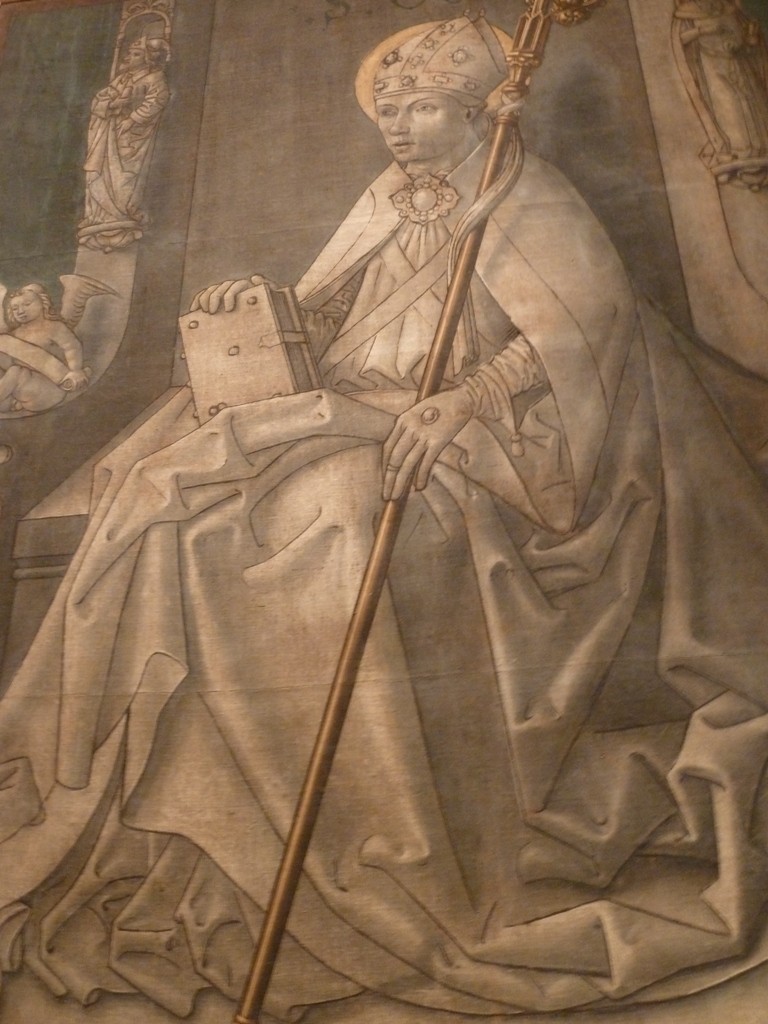



Photo gallery
Content available in other languages
- Français: MNAC #1: trésors romans
- Español: MNAC #1: Tesoros románicos
- Polski: MNAC #1: Romańskie skarby
- Português: MNAC #1: Tesouros Românicos
- Italiano: MNAC #1: i tesori romanici
Museu Nacional d'Art de Catalunya, Spain
Museu Nacional d'Art de Catalunya, Spain
The Museu Nacional d'Art de Catalunya is well known for Catalan arts of nineteen and twenty centuries and outstanding collection of Romanesque church paints. The museum is located on the Montjuic hill with front view of fountains and ponds. This museum obtains the title of largest museum in Spain. The architectural design of this building is equally important as the artistic designs and paintings which exhibit in the museum. It was an Italian styled building but later, it was undergone with lot of renovations.
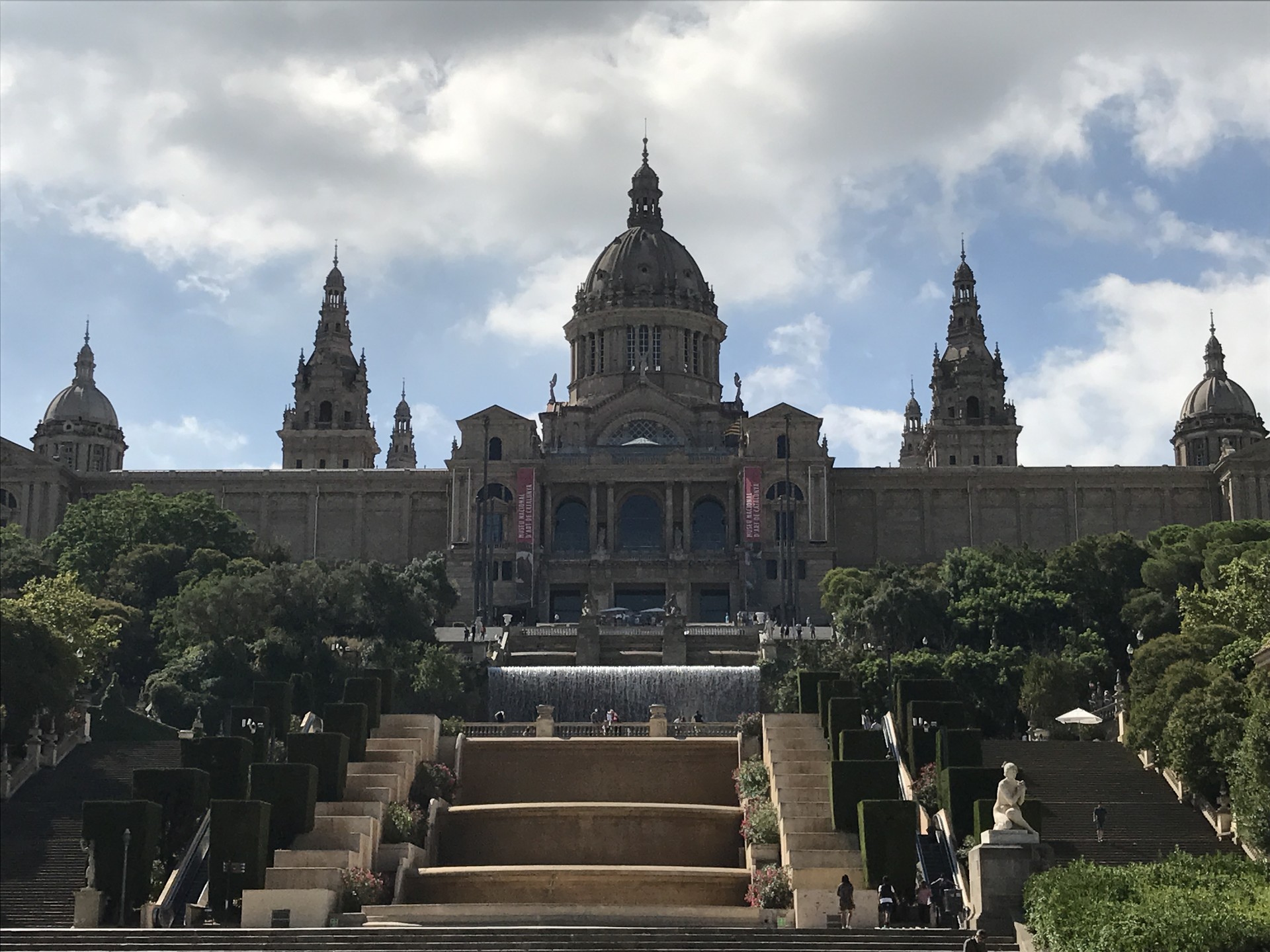
The series of Mural painting in the museum make this place inequitable with other art museums and art galleries in the world. These arts are quite unique and I have not seen these kinds of arts before in other countries specially, in Asian countries. Along with that the Gothic Art collection takes prominent place in this museum, which belongs to 13, 14 and 15 Centuries. Apart from these arts, it belongs a huge collection of Modern Art, and Renaissance and Baroque Art which consist with Thyssen Bornemisza paintings, The Cambó Bequest collection.
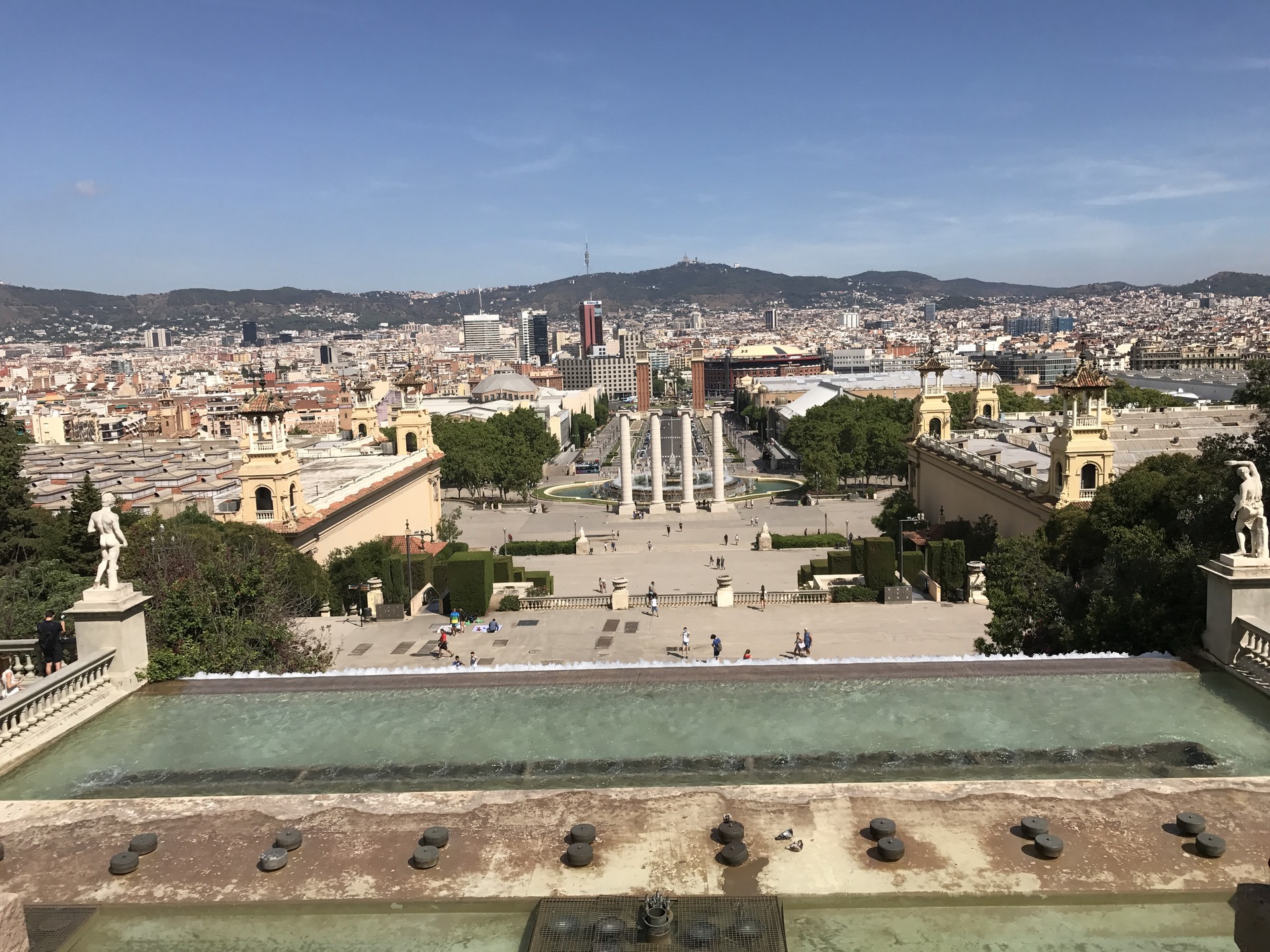
Apart from the paintings this museum is very famous for its front view. When you buy the tickets to enter to the museum you can have an opportunity to enjoy the front view of fountains and ponds. It is worth to spend this amount since the beauty of it, is hard to describe by words. Basically, they offer tickets for 12 euro but this price may vary according to age levels. They offer different packages and discounts for students, adults above age 65, children under age 16 and Barcelona card holders. My advice is to check the web site to get all the new information.
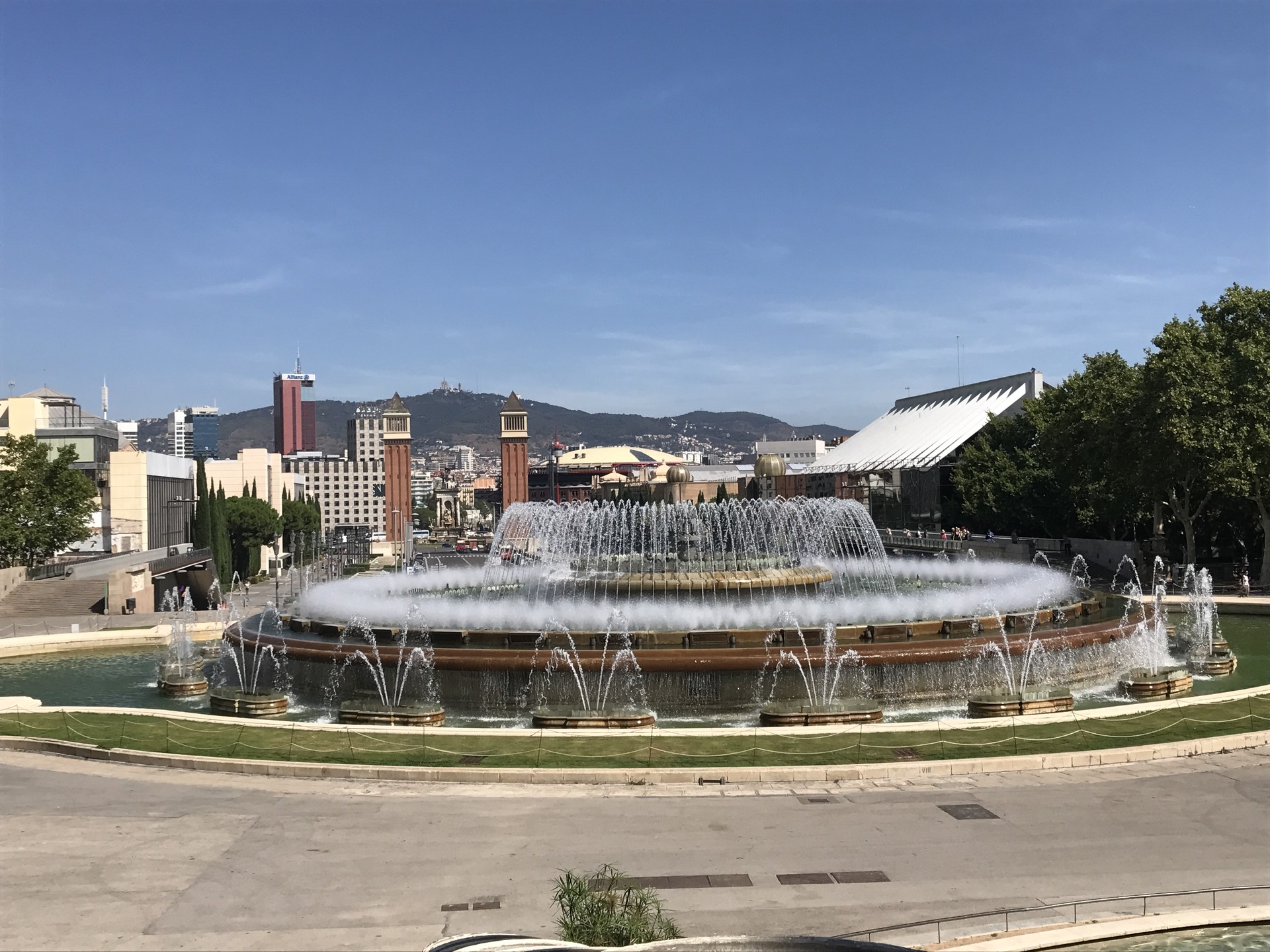
When you climb up through the stair way you can enjoy the front view even without entering to the museum. This place was a wonderful place for me to relax in the evening since there were street singers who sang incredibly which was capable enough to send all my stress away. I should say that there are lot of people who were selling water and other souvenirs for traveller. But I saw a person who made handmade souvenirs among them which was unique and beautiful. That was amazing.
If we go at night you can enjoy the fountains and ponds which are dancing with the lights. If you go there during the day time my advice is to go around 11. 00 a. m. since then you can see the all functions of the fountains and ponds. If you go to Barcelona then do not miss to go to this place.
Photo gallery
Content available in other languages
Rate and comment about this place!
Do you know Museu Nacional d'Art de Catalunya? Share your opinion about this place.








































